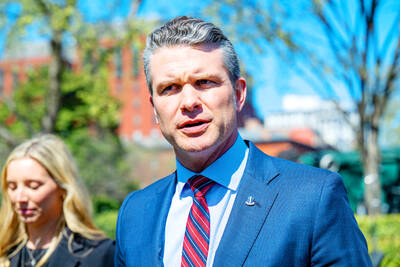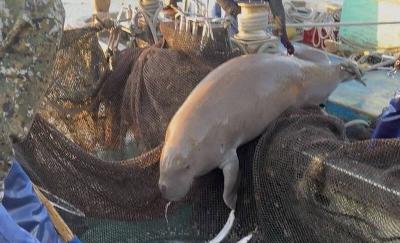The Tourism Bureau said the nation has been generating a tourism revenue surplus since 2011, adding that the increase of Chinese tourists did not push Japanese tourists away.
The bureau was responding to reports by the Chinese-language Liberty Times (the Taipei Times’ sister newspaper) that cited Providence University professor Hwang Cheng-tsung (黃正聰) as saying that tourism benefits should not be viewed only from the aspect of revenue, adding that while Taiwan takes pride in having 8 million visitor arrivals last year, it fails to see that every year, Taiwanese make 10 million tourist visits overseas.
Another story in the Liberty Times cited a report published by the Legislative Yuan’s Budget Center that asked the government to restrict the quota reserved for Chinese tourists and enhance campaigns to attract tourists from countries with greater spending power, such as Japan.
The bureau said that Taiwan has enjoyed a surplus in tourism revenue since 201l, when the income brought by inbound tourists exceeded the expenditure of outbound tourists by NT$28.1 billion (US$936 million). Last year’s surplus was smaller, as tourism revenue topped NT$366.8 billion, while the expenditure of outbound tourists reached NT$366.3 billion, but comparing the amount spent by outbound tourists and by inbound tourists can be misleading, it said.
This is because expenditure of outbound tourists includes the money spent on flight tickets, which accounts for about half or one-third of travel expenditures, while the revenue brought by inbound tourists does not include money spent on flight tickets, it said.
Regarding the cross-strait tourism market, the ratio between Chinese tourists in Taiwan and Taiwanese tourists in China dropped from 0.95 in 2008 to 0.44 last year, statistics from the bureau showed.
Meanwhile, the deficit in the cross-strait tourism market shrank from US$4.151 billion in 2008 to US$726 million last year. The deficit turned into surplus in the first half of this year, when Chinese tourists brought US$3.63 billion in revenue. By contrast, the expenditure of Taiwanese tourists traveling domestically reached US$3.06 billion.
The bureau said that about 50 percent of Taiwanese visitors to China are Taiwanese businesspeople, who tend to go in and out of China multiple times throughout the year. About 75 percent of Chinese visitors to Taiwan came for tourism purposes only, it said.
The bureau denied that Japanese tourists were pushed out by the large number of Chinese tourist arriving in the nation.
Statistics from the bureau indicated that about 783,000 Japanese tourists visited between January and June this year, about 18.5 percent more than in the same period last year, it said.
The Japan Association of Travel Agents has projected year-on-year growth of 40 percent in the third quarter this year, the bureau said. The bureau also said that the devaluation of the yen and the rise in Japan’s sales tax had discouraged Japanese from traveling abroad and spending while traveling last year.
The bureau said the number of South Korean visitors grew by 79.81 percent between January and June this year. Arrivals from Malaysia increased by 27 percent in that time, while those from Hong Kong and Macau rose by 18.55 percent. Double-digit growth was also seen in arrivals from Europe, North America, New Zealand and Australia.

‘DENIAL DEFENSE’: The US would increase its military presence with uncrewed ships, and submarines, while boosting defense in the Indo-Pacific, a Pete Hegseth memo said The US is reorienting its military strategy to focus primarily on deterring a potential Chinese invasion of Taiwan, a memo signed by US Secretary of Defense Pete Hegseth showed. The memo also called on Taiwan to increase its defense spending. The document, known as the “Interim National Defense Strategic Guidance,” was distributed this month and detailed the national defense plans of US President Donald Trump’s administration, an article in the Washington Post said on Saturday. It outlines how the US can prepare for a potential war with China and defend itself from threats in the “near abroad,” including Greenland and the Panama

A wild live dugong was found in Taiwan for the first time in 88 years, after it was accidentally caught by a fisher’s net on Tuesday in Yilan County’s Fenniaolin (粉鳥林). This is the first sighting of the species in Taiwan since 1937, having already been considered “extinct” in the country and considered as “vulnerable” by the International Union for Conservation of Nature. A fisher surnamed Chen (陳) went to Fenniaolin to collect the fish in his netting, but instead caught a 3m long, 500kg dugong. The fisher released the animal back into the wild, not realizing it was an endangered species at

The Chinese Nationalist Party (KMT) is maintaining close ties with Beijing, the Democratic Progressive Party (DPP) said yesterday, hours after a new round of Chinese military drills in the Taiwan Strait began. Political parties in a democracy have a responsibility to be loyal to the nation and defend its sovereignty, DPP spokesman Justin Wu (吳崢) told a news conference in Taipei. His comments came hours after Beijing announced via Chinese state media that the Chinese People’s Liberation Army’s Eastern Theater Command was holding large-scale drills simulating a multi-pronged attack on Taiwan. Contrary to the KMT’s claims that it is staunchly anti-communist, KMT Deputy

The High Prosecutors’ Office yesterday withdrew an appeal against the acquittal of a former bank manager 22 years after his death, marking Taiwan’s first instance of prosecutors rendering posthumous justice to a wrongfully convicted defendant. Chu Ching-en (諸慶恩) — formerly a manager at the Taipei branch of BNP Paribas — was in 1999 accused by Weng Mao-chung (翁茂鍾), then-president of Chia Her Industrial Co, of forging a request for a fixed deposit of US$10 million by I-Hwa Industrial Co, a subsidiary of Chia Her, which was used as collateral. Chu was ruled not guilty in the first trial, but was found guilty